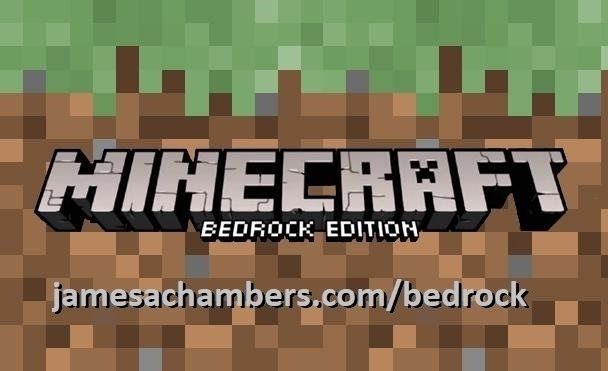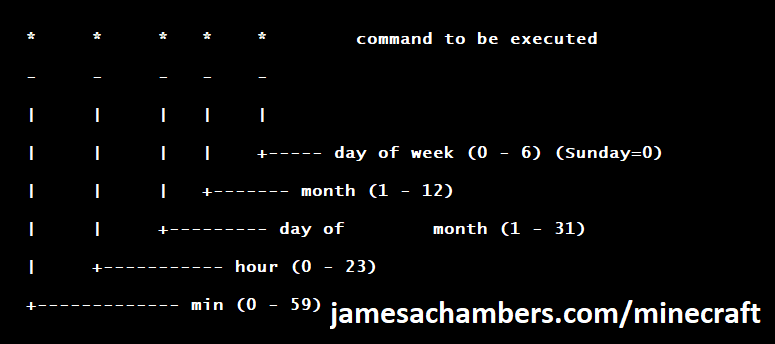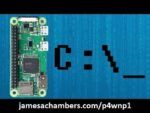
Minecraft Bedrock Edition is the version of Minecraft that powers the iPhone / Android versions (formerly Minecraft Pocket Edition), the Xbox / PlayStation / Nintendo Switch editions and the free Windows 10 Minecraft edition.
Mojang has released a dedicated server which is considered to be in alpha testing. I have found it to be very stable and able to run on a wide variety of hardware.
This script and guide are written to help you get a robust Minecraft Bedrock dedicated server up and running in only a few minutes!
This is the standalone version. The easiest and most problem-free way to run this is using Docker (installed as simply as sudo apt install docker.io): Legendary Minecraft Bedrock Container
I’ve also released a way for Java and Bedrock players to play on the same server using Geyser: Minecraft Java + Bedrock Server Together – Geyser + Floodgate
It’s now possible to convert your worlds between Bedrock and Java versions. Check out my guide on Chunker here for more information.
Features
- Sets up the official Minecraft Bedrock Server (currently in alpha testing)
- Fully operational Minecraft Bedrock edition server in a couple of minutes
- Ubuntu / Debian distributions supported
- Sets up Minecraft as a system service with option to autostart at boot
- Automatic backups when server restarts
- Supports multiple instances — you can run multiple Bedrock servers on the same system
- Updates automatically to the latest or user-defined version when server is started
- Easy control of server with start.sh, stop.sh and restart.sh scripts
- Adds logging with timestamps to “logs” directory
- Optional scheduled daily restart of server using cron
Requirements
- A computer with a 64 bit processor (if you are trying to use ARM read my article on the limitations). 32 bit binaries of the official server are not available so it needs to be 64 bit!
- 1 GB of RAM or higher
- The only officially supported platform by Microsoft is Ubuntu 22.04 / 20.04 (current LTS, recommended)
- Other Linux flavors supported by this script as well as long as they use systemd (for the service). The script assumes apt is installed but there are minimal dependencies so you could install these on another distro (that doesn’t have apt present) and use the script normally.
Recommended Gear
Game Editions
Minecraft: Bedrock Edition is the “Windows 10” version of Minecraft as well as the version of Minecraft on the Xbox / Playstation / Switch. The versions of Minecraft for Android and iOS are also the Bedrock edition.
All of these versions support cross-platform play with each other (but not with the Java edition).

This is the PC Minecraft for Windows 10 (Bedrock) edition of Minecraft. It is able to play cross-platform with other players on Android / iOS / Playstation / Xbox / Switch. Available as a code that is instantly activated to give you permanent access to the game!
Links: Amazon.com*, Amazon.co.jp*, Amazon.co.uk*, Amazon.de*, Amazon.es*, Amazon.fr*, Amazon.it*

The Sony PlayStation version of Minecraft: Bedrock edition.
Links: Amazon.com*, Amazon.ca*, Amazon.com.au*, Amazon.co.jp*, Amazon.co.uk*, Amazon.de*, Amazon.es*, Amazon.fr*, Amazon.it*, Amazon.nl*, Amazon.se*, Amazon.sg*

This is the Nintendo Switch version of Minecraft: Bedrock edition.
Links: Amazon.com*, Amazon.ca*, Amazon.com.au*, Amazon.co.jp*, Amazon.co.uk*, Amazon.de*, Amazon.es*, Amazon.fr*, Amazon.it*, Amazon.nl*, Amazon.pl*, Amazon.se*, Amazon.sg*

This is the Microsoft Xbox version of Minecraft: Bedrock edition.
Links: Amazon.com*, Amazon.ca*, Amazon.com.au*, Amazon.co.uk*, Amazon.de*, Amazon.es*, Amazon.fr*, Amazon.it*, Amazon.nl*, Amazon.sg*
Recommended Storage (Solid State Drive)
I strongly recommend a Solid State drive (SSD) for your server. This is because Minecraft is constantly reading/storing chunks to the disk which makes I/O performance very important.
These are much cheaper than they used to be. Here’s a decent 120 GB one (higher capacity options are available) at a very low price:
The Kingston A400 is reliable, widely available around the world, has low power requirements and performs very well. It’s also very affordable. This drive has been benchmarked over 1000 times at Pi Benchmarks and is the #1 most popular SSD among the community!
Links: AliExpress*, Amazon.com*, Amazon.ca*, Amazon.com.au*, Amazon.co.jp*, Amazon.co.uk*, Amazon.de*, Amazon.es*, Amazon.fr*, Amazon.it*, Amazon.nl*, Amazon.pl*, Amazon.se*, Amazon.sg*
If you have a M.2 NVME slot in your motherboard you can go with a high end drive. This will give your server maximum performance even if a large number of players are running around on the server changing blocks and triggering disk writes.
This is the one I have in my machine. These range from 250 GB to 2 TB depending on how big your server might grow:
The Samsung 980 Pro (NVMe) is a professional grade SSD and one of the fastest in the world. The Samsung NVMe drives have been at the top of this category for a long time and are well trusted for both their performance and reliability / long life.
Links: AliExpress*, Amazon.com*, Amazon.ca*, Amazon.com.au*, Amazon.co.jp*, Amazon.co.uk*, Amazon.de*, Amazon.es*, Amazon.fr*, Amazon.it*, Amazon.nl*, Amazon.pl*, Amazon.se*, Amazon.sg*
Computer / CPU / Memory
Almost any PC made in the last few years will be a x86_64 bit computer. If you have an older computer around that isn’t being used then it will most likely have the right CPU and amount of memory (as well as fast storage) to run a basic server.
Throwing a SSD in one of these older computers will provide an excellent server experience for small and larger player counts.
The speed of your storage will make the largest difference. Older HDDs are going to have significantly slower performance than any modern SSD even with all other hardware equal. This is because the Minecraft server is constantly reading/writing chunks of your world as well as updates to it to the disk so this tends to be the bottleneck.
Operating System
I highly recommend using Ubuntu Server to run the Minecraft dedicated server. It is available here.
At the time of writing the current version is Ubuntu Server 20.04. This is a secure and robust operating system and will leave plenty of resources available for the server to run.
The script should run on any Debian based flavor of Linux but since the Minecraft Bedrock server is compiled natively for Ubuntu I recommend sticking with it. If you have a GUI flavor of Ubuntu and a decent PC (>= 2 GB of RAM) the server will work just fine on it.
Note: People have reported in the comments that Ubuntu 16.x is no longer working with the latest official Mojang binaries. Ubuntu 18.04 is the minimum requirement for the latest versions, and 20.04 is recommended!
Installation
Log into your Linux server either using SSH or a mouse and keyboard and paste/type the following command:
curl https://raw.githubusercontent.com/TheRemote/MinecraftBedrockServer/master/SetupMinecraft.sh | bashThe script will setup the Minecraft sever and ask you some questions on how to configure it. I’ll explain here what they mean.
The first question will be the installation path. This is the root installation path for ALL servers you will have. If you add additional servers later you should select the exact same installation path. It should always be left as the default (~).
The only exception is if you have something like a completely dedicated disk for the Minecraft server. In that case you should always use the same root path of /mnt/yourdrive or wherever the path is for every new/additional server you install.
“Start Minecraft server at startup automatically (y/n)?” – This will set the Minecraft service to start automatically when your server boots. This is a great option to set up a Minecraft server that is always available.
“Automatically restart and backup server at 4am daily (y/n)?” – This will add a cron job to the server that reboots the server every day at 4am. This is great because every time the server restarts it backs up the server and updates to the latest version. See the “Scheduled Daily Reboots” section below for information on how to customize the time or remove the reboot.
That is it for the setup script. The server will finish configuring and start!
First Run
The server will start up and start displaying output to the console.
[2019-03-30 20:25:12 INFO] Starting Server
[2019-03-30 20:25:12 INFO] Version 1.10.0.7
[2019-03-30 20:25:12 INFO] Level Name: Bedrock level
[2019-03-30 20:25:12 INFO] Game mode: 0 Survival
[2019-03-30 20:25:12 INFO] Difficulty: 1 EASY
[2019-03-30 20:25:20 INFO] IPv4 supported, port: 19132
[2019-03-30 20:25:20 INFO] IPv6 supported, port: 19133
[2019-03-30 20:25:23 INFO] Server started.
Once you see the “Server started” line you will be able to connect from the client.
To add the server to the client open Minecraft and click “Play”. Then at the top of the screen select the “Servers” tab and click “Add Server”.
This will ask you for a Server Name and Server IP Address. For the name you can put anything and for the server IP address put the address of your Linux server. Leave the port as the default 19132. For more information on how to let people from outside your network on go to the “Port Forwarding” section below.
Now choose the server you just added in the list and connect!
Start, Stop and Restart Server
The server can be started, stopped and restarted two different ways. You can use the provided scripts in the Minecraft folder or you can use systemctl. Here are the commands:
cd ~/minecraftbe ./start.sh ./stop.sh ./restart.sh -OR- sudo systemctl start minecraftbe sudo systemctl stop minecraftbe sudo systemctl restart minecraftbe
Automatic Backups
The server backs up each time it starts. This helps you recover easily if something goes wrong. This system works best if you configured the server to restart daily since it means you will have a backup every day.
To access these backups type:
cd ~/minecraftbe/backups
ls
When a backup is made the filename will be the date and time the backup was taken. If you need to restore a backup it’s very easy. Substitute the timestamp in my example to the backup you want to roll back to. Type:
cd ~/minecraftbe ./stop.sh rm -rf worlds tar -xf backups/2019.02.15.22.06.30.tar.gz ./start.sh
Your world has now been restored! It’s a good idea to download these backups off the server periodically just in case the server’s storage fails.
Installing Resource Packs / RTX Support
For instructions on how to install resource packs (including optional RTX support) view my step by step Minecraft Bedrock Dedicated Server Resource Packs guide here.
Scheduled Daily Reboots
The daily reboots are scheduled using cron. It’s very easy to customize the time your server restarts.
To change the time that the server restarts type: crontab -e
This will open a window that will ask you to select a text editor (I find nano to be the easiest) and will show the cronjobs scheduled on the server. The Minecraft one will look like the following:
0 4 * * * /home/ubuntu/minecraftbe/restart.sh

There are 5 fields here. The default restart time is set to reboot at 0 minutes of the 4th hour of the day (4 AM). The other 3 fields are left as * to represent every day of every month. Make any desired changes here and press Ctrl+X to exit nano and update the cronjob.
To remove the daily reboot simply delete the line and save.
Reconfigure / Update Scripts
The scripts can always be reconfigured and updated by downloading the latest SetupMinecraft.sh and running the installer again. It will update all of the scripts in the Minecraft directory and reinstall the startup service for you.
Running SetupMinecraft.sh again will also give you a chance to reconfigure options such as the memory dedicated to the server, daily reboots, starting the server on boot, etc.
This will not overwrite your world or any other data so it is safe to run!
Port Forwarding
If everyone on your server is on the same LAN or WiFi network as you then you don’t need to do this. If you want people to connect from outside your local network then you need to set up port forwarding on your router.
The process for this is different for every router so the best thing to do is just look at your router and find the model # and put that in google with port forwarding for easy instructions on how to do it for your specific router.
You want to forward port 19132. The type of connection is both TCP and UDP. On some routers you need to do both a TCP entry and then a second entry as UDP.
Once you do this people will be able to connect to your Minecraft server through your public IP address. This is different than your local IP which is usually a 192.x.x.x or 10.x.x.x. If you don’t know what that is just go to google and type “what’s my ip” and Google will kindly tell you!
Version Override
You can revert to a previous version with the revert.sh script included in your directory like this:
james@jamesgigabyte-linux:~/minecraftbe/james$ ./revert.sh Set previous version in version_pin.txt: bedrock-server-1.19.10.20.zip
If you have a specific version you would like to run you can also create version_pin.txt yourself like this:
echo "bedrock-server-1.18.33.02.zip" > version_pin.txt
The version hold can be removed by deleting version_pin.txt. This will allow it to update to the latest version again!
Wired vs. Wireless
Going with an ethernet (wired) connection is going to be faster and more reliable. There’s so much wireless traffic and other interference in the air that running your server on WiFi is not recommended.
Even if it is working great 99% of the time it can ruin your experience very quickly if the WiFi drops for a couple of seconds and you get blown up by a creeper!
All that being said, the server works fine on wireless. The script will work fine as is with a wireless connection.
Benchmarking / Testing Storage
If you’re getting poor performance you may want to run my storage benchmark with:
sudo curl https://raw.githubusercontent.com/TheRemote/PiBenchmarks/master/Storage.sh | sudo bash
PC results won’t show up on the site yet (it’s meant for Raspberry Pi) but it will run on Linux just fine and give you a score. If you search for the model of your drive on Pi Benchmarks you can compare your score with others and make sure the drive is performing correctly!
Troubleshooting Note – Oracle Virtual Machines
A very common problem people have with the Oracle Virtual Machine tutorials out there that typically show you how to use a free VM is that the VM is much more difficult to configure than just about any other product / offering out there.
It is because there are several steps you need to take to open the ports on the Oracle VM. You need to both:
- Set the ingress ports (TCP/UDP) in the Virtual Cloud Network (VCN) security list
- *and* set the ingress ports in a Network Security Group assigned to your instance
Both of these settings are typically required before you will be able to connect to your VM instance. This is purely configuration related and has nothing to do with the script or the Minecraft server itself.
I do not recommend this platform due to the configuration difficulty but the people who have gone through the pain of configuring an Oracle VM have had good experiences with it after that point. Just keep in mind it’s going to be a rough ride through the configuration for most people.
Troubleshooting Note – Hyper-V
There is a weird bug in Hyper-V that breaks UDP connections on the Minecraft server. The fix for this is that you have to use a Generation 1 VM with the Legacy LAN network driver.
Conclusion
The Minecraft Bedrock Edition dedicated server runs much better than previous third party servers in the past that were missing critical features. The performance is very good even on low end hardware. It has never been easier to set up a Minecraft Bedrock server.
If you have any feedback or suggestions let me know in the comment section. A lot of the changes and developments in this script and guide are directly from readers.
Have fun!
Other Resources
For a guide on how to set up resource packs check out my Minecraft Bedrock Resource Pack guide
If you’re trying to run this on the Raspberry Pi check out the Raspberry Pi specific guide here










I have 2 servers set up for my son, and found that they were stuck at 1.16.40 – no auto update because the “internet connection” test URL
httx://minecraft.net/en-us/download/server/bedrock/currently suffers from a redirect, so the update fails. I had to change it tohttx://www.google.com/in start.sh – works beautifully now!Hey Justin,
Sorry about that! That was actually fixed a little while ago. What happened is Minecraft made it so that if you “spidered” the server it redirected or gave you an error.
The new version no longer uses the spider parameter to test for internet connectivity. The workaround you did works too!
Ahh, excellent – yeah, I have had these VMs running for quite some time, and had complaints when my son tried to join yesterday, so spent some time forcing updates without the connectivity test (just hashing them out) then went to work making the script function properly whilst unattended.
I had not heard about the “anti spider” issue, so just changed the address and away it went.
That works! I tried to make it somewhat easy to modify too and not be some cryptic wall of bash code. I’m glad you were able to go in there and take care of it!
Firstly, let me raise a virtual glass to you for this. Saved me a ton of time and I now have my server up and running on Azure (free credits!). Great job!
I’m far from a Linux expert so this was a life saver – all I googled was how to autostart minecraft on server boot and found this.
Couple of hopefully quick questions.
1) for some reason, starting or stopping the server using systemctl doesn’t work. I get this message “Failed to stop minecraftbe.service: Unit minecraftbe.service not loaded.” I can start and stop using start.sh and stop.sh – I’m not sure if that will cause an issue with the autostart on boot or not – I haven’t tried that yet.
2) What would be helpful to me is to be able to stop the server on a schedule so that I can stop the server gracefully before my scheduled virtual machine shut-down managed through Azure. I won’t have the server running 24/7 to keep the costs down. Any suggestions on that one?
Thanks again for a great bit of work.
I think I’ve solved both issues!
1) I took a look at the install script and discovered that the service name is the name you specify during execution – not minecraftbe. So sudo systemctl stop nameofmyserver works fine.
2) I editied the chontab file and changed the script from restart to stop.sh and modified the time accordingly, so should be good to go now.
Thanks again though!
Hey Jason,
You beat me to it! Thanks for the kind words, and I’m glad you replied with your steps as it will definitely help others going forward!
I have the same issue, but suspect it is because I’m not sure where to enter the commands. I assumed I would open a new terminal (I have the desktop version of Ubuntu 20.04, with all current updates), and type the commands into the terminal. With this message as a result regardless of whether I try to stop, start or restart the server. I’ve also tried to type the commands into the window that pops up after installation with no results. I’ve tried both sets of commands in this way. Aside from this issue I found your process to be quite slick! Easy and straight forward. Perhaps to easy because it has allowed someone like me who has not used linux for nearly 20 years to get this far…
Thanks for your help!
Hey David,
I think you’re really close! When you open the terminal it should default to your home folder (usually represented in Linux as ~).
To get into the folder that all the scripts are in once the terminal opens type:
cd minecraftls
These commands will move you to the minecraft folder and then list the contents of the folder. In there you should see start.sh, stop.sh, etc. To start the server you can use:
./start.shThis will run the start script. If you set the server to start automatically you may want to try:
screen -rThis will pull up the server console from the background. Can you give those a try and let’s see if it’s already running or just needs to be started!
Hello,
I’m currently setting this up on a Raspberry Pi 3B+(or trying to). I’m stuck with a strange issue. It seems to get the starting process going when I start, but it then says “Error: Unknown option Logfile”
I also don’t see any files in the logs area, but I don’t know if that’s an issue or not.
I understand it may have some issues on raspberry pi, but I’d like to at least try to get it going if I can.
Hey TJ,
It takes quite a while to start up, especially the first time, even on a Model 4B. I’d say it can take 5-10 minutes sometimes to fully load up on the 4B. How long have you waited for it to start? Does it exit after it says that about the log file or if you let it run for a long time will it eventually load?
So about the log warning message: this is unfortunately normal. The Minecraft Bedrock Dedicated Server actually still has not implemented logging so there’s nothing you can do about that. Check out the “Minecraft Feedback” post about this with 84 votes and lots of snarky comments over the past 2 years about it still not being done..
The way my script is able to achieve logging is by using a trick. Here’s an excerpt from the bash script to show you what I mean:
echo "Starting Minecraft server. To view window type screen -r servername"echo "To minimize the window and let the server run in the background, press Ctrl+A then Ctrl+D"
# screen command to spawn log files in logs/ directory never checked to see if a directory named logs/ exists. Now we check and create one if it doesn't
if [ ! -d "logs/" ]
then
mkdir logs
fi
screen -L -Logfile logs/servername.$(date +%Y.%m.%d.%H.%M.%S).log -dmS servername /bin/bash -c "LD_LIBRARY_PATH=dirname/minecraftbe/servername dirname/minecraftbe/servername/bedrock_server"
On the very last line is where the magic happens. We are using a feature built into “screen” to even have any logging at all. You can do the same trick (and indeed you can run this very same command) yourself on the command line to get logs.
Do you see the logs folder in the directory? The lines right before it are supposed to check and create the folder but it may be worth seeing if it’s there or not and if there’s anything else inside there. Sometimes the log file may have an extra line that only prints right as the program is exiting but too quickly for you to see on the screen. The log file will capture those very last lines which may help!
I am immediately pushed back to the command line when it runs into the log issue. I’m able to see a log folder, but there’s nothing inside it. I tried running the bottom parts separately, but it gives me the same error. I’ve been running the commands in an already open command line to prevent it from closing, and haven’t seen anything else.
Hey TJ,
Thanks for the additional information. Are you using the 64 bit version of Raspberry Pi OS? It is available here or use the Raspberry Pi Imager tool to create a more up to date version.
From what you’re describing it isn’t getting very far. Can you tell us exactly which OS you’re running? A 64 bit flavor of another OS like Ubuntu would work too!
I should have thought to ask you this the first time as unless you’ve made an effort you’re probably running a 32 bit OS. The Minecraft Bedrock server is 64 bit and in another architecture, but at least going 64 bit to 64 bit speeds things up a little bit by not adding another layer of translation from 32 bit to 64 bit on top of ARM to x86_64 (grossly oversimplified to illustrate the point) if that makes sense!
I’ve been running a 32-bit OS, but I have an issue when I try to install the imaging tool. The Pi can’t find the package when I use the “sudo apt install rpi-imager” command as it is intructed to do on the place you linked. Is there a way to fix this?
Hey TJ,
Absolutely! It should be in the official repository but it sounds like yours may be out of date. Can you do a:
sudo apt updateand then try again here? Is this Raspbian/Raspberry Pi OS?
You could also just download the file that says it’s the package for Ubuntu from here and follow the instructions for Ubuntu which should work on Raspberry Pi OS!
Great guide, covers everything needed to get a vanilla Bedrock server up and running, even provides scrips for quick setup and management.
Just one question… I was hosting this on a VPS for about a month then moved it to a local PC running Ubuntu Server. Now with it on the local PC, the MOTD doesn’t show up to me when using the public IP to connect to the server, only when using the internal IP (which is only available to me). Is this a bug in Mojang’s software or did I happen to do something wrong?
Much appreciated.
Hey Steve,
The Bedrock dedicated server does have some bugs right now related to the ports it opens. When you start the server you’ll see it start one set of ports that matches what is in your config and then a second set of ports that are seemingly randomly chosen.
These seem to be the local discovery ports which send information like the MOTD/# of players online and they are the ones that are broken. Here’s a pretty extensive bug report about these “discovery” ports and he has some really good steps that may be worth checking on your configuration.
There is something else we should take into account here. How did you set up your port forwarding? Minecraft Bedrock is 99% UDP based traffic when you’re in the game and playing (unless it needs to fall back to TCP) but it actually does use TCP for some parts of discovery like checking the ping and the number of players online. Did you forward both types of traffic for TCP and UDP? Some routers you can choose both, others you need to create 2 separate entries. It could also be reversed where if you only forwarded TCP not everything is getting through but enough to connect and join the server is.
I’ve also wondered if you added TCP and UDP port forwarding for the random set of ports it opens up when you start the server (the ones that aren’t 19131/19132 or in your config.txt) if this would actually fix discovery. The Bedrock server used to listen on the same ports your game did and there were no second set of ports. Even if this worked it would be extremely annoying because every time you restart the Bedrock server you’d have to change your port forwarding entries since it will select different random ports. We really need them to fix that bug to fix this issue!
I vaguely remember that the ‘online-mode’ in your server.properties might have an effect on which IP address your server “binds” on. In online mode it’s probably your public IP. This is probably how your server was setup. You may want to try online-mode as false just as a test to see if it binds to your private IP for MOTD. Unfortunately if this works then it means you’ll have to choose one or the other since there’s no option to set or control anything about these discovery ports.
I suspect none of this was an issue on your previous config because as a VPS you would have always had to access it through public IP address. It also wasn’t going through a router with network address translation (NAT) and port forwarding so whatever random ports it was opening up wouldn’t have mattered unless you had a strict firewall setup.
Hopefully that helps, let us know what you find out!
Hi.
The script was able to setup the server successfully, however I cannot connect to the world. It says unable to connect to world. I am on minecraft version 1.16.201. It says in the console version 1.16.201.2. How do I downgrade the server version so that I can play?
Hey thetechguy,
Your version looks ok. If you are on the wrong version it will tell you that instead of fail to connect.
When this happens to me I have to completely close the Minecraft client and relaunch it. It seems like once it’s down it will fail until you restart it.
Of course check all IPs and firewalls etc as well!
I have setup a Hyper-V virtual machine. On that machine I installed Ubuntu Server v20.10. Next I used putty to remote in and ran your script, which worked beautifully. After I had established a world from the initial start I stopped the server then copied my existing server.properties and worlds/ folder into the server folder via putty. Now I cannot access the server either through the Friends tab (which I could on port 19132 running bedrock server from Windows) nor through the Servers tab using the correct IP and port.
Are there any suggestions you may have as to why this auto install you created isn’t visible over the LAN?
Thanks
Hey Geoff,
I have two theories. It may have something to do with the ‘online-mode’ parameter in the Bedrock server.properties file (make sure you scroll down to the “Bedrock” section since the first section is Java).
Basically, online mode puts the server in “online-mode” and requires all players to be authenticated to Xbox Live to connect. It would not surprise me if this disables the “LAN mode” broadcasting when it is in this mode. It could also be your replacement server has this off and it needs to be off to behave like you’re expecting. It’s worth toggling this on and off and see if there’s a change.
The second theory is that this has something to do with the other set of ports that the Bedrock server open up for Minecraft. Did you change the ports that Minecraft listens on? What I mean is that when you launch the server you’ll notice that a second set of ports that you didn’t put in server.properties is also opened up. I think these ports may have something to do with the LAN server browser.
I don’t have a solution for this second piece because it’s an official bug, but if it’s working before you replace your server.properties file I would check the entries one by one against that list paying particular attention to the ‘online-mode’ and the ports. Stick to the default ports if you can just to rule out any port related shenanigans!
Hi James,
Great guide, I believe set-up went flawlessly.
When I try to connect from my laptop in W10 bedrock, the screen gets stuck on Generating World and Locating Server. I can see my ID has connected using the Linux screen.
Not sure if I am doing something wrong, as I am not familiar with Minecraft servers – trying to set it up for my son.
Any help would be great.